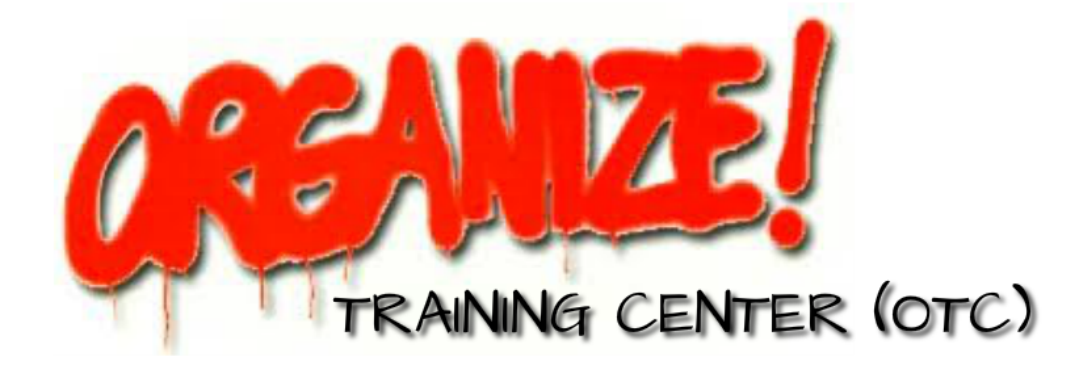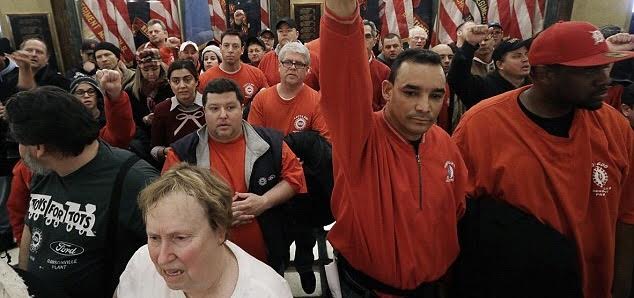|
Trump Racists? Were whites who voted for Trump racists? If a white voted for Obama in 2008 or 2012, but voted for Trump in the 2016 election, was s/he not a racist? I think there is no adequate answer to these framings of the question. We cannot understand what is going on in the country if we limit ourselves to questions of this type. Instead I propose questions that ask the details about what happened in circumstances when white-black (or any other people vs. another group of people) unity overcame otherwise divisive understanding of self- interest and prejudicial views of “The Other.” To do that requires telling stories, not truncated questionnaires that ask for yes/no or ranked short-answers, nor even the answers from the hot-house context of a focus group—no matter how good the facilitator is. Labels are static: they describe someone at a point in time. People live in dynamic, always changing, circumstances. The question is whether people with small “d” democratic values can successfully engage others who may disagree with them. The interplay of class and “identity” (as the term now is widely used to describe statuses other than class) needs more discussion if we are to win the support of white working class people who voted for Donald Trump. To win issues of the latter category, one set of alliances is made. For example: immigration reform advocates make alliances with corporations that want to hire cheap labor; and the National Women’s Political Caucus recruits, trains and supports pro-choice women candidates for elected and appointed offices at all levels of government regardless of party affiliation. I have black acquaintances who support Clarence Thomas because he’s African-American, despite the fact that he voted to end Deep South protection of African-American voters in the Shelby v Holder case. And I have women friends who agreed far more with Bernie Sanders than they did with Hillary Clinton but supported her to “break the glass ceiling.” To win issues of the former category, minorities make alliances with “whites,” typically to form unions but also in anti-freeway, urban renewal, massive development, affordable housing and other issues. When the community campaigns are used to form or deepen on-going relationships (as in multi-issue community organizations), the possibility exists to transform old prejudices—as the stories above demonstrate. So, too, can relationships in a multi-ethnic/racial union change attitudes and understandings of “white” members. The dominance today of “identity politics” precludes these latter possibilities—opening the door for the demagoguery of Donald Trump. But minorities and women have separate battles that need to be fought as well. Achieving a strategic balance is necessary. It is also difficult to achieve. Organizing Peabody Coal An old-timer I met in the early 1960s, who worked as an organizer for the United Mine Workers Union in the 1930's, told me this story about how he organized prejudiced white workers at the Peabody Coal Co. in Kentucky (but it could have been elsewhere in the South): Organizer : "Wanna talk about the Mine Workers Union?” White Worker: "Ain't you the Union let's in the niggers?" (When he heard that the organizer would take the white worker by the arm and walk with him until they saw a black worker.) Organizer: "See that fella over there?" (Organizer points to the black worker.) White Worker: "Yeah." Organizer: "Who's he work for?" White Worker: "Peabody." Organizer: "Who do you work for?" White Worker: "Peabody." Organizer: "You think about it; we'll talk more later.” Eddie Wafford Shows Up (You’ll Quickly See My Debt To The Peabody Coal United Mine Workers Union Organizer) I grew up in the Sunnydale Housing Project, at the western edge of Visitacion Valley, a neighborhood in San Francisco. Twenty years after I left, I returned as the lead organizer for what was initially the Visitacion Valley Organizing Committee (VVOC), an effort to build a multi-issue federation that would be a people power organization for the mostly- low-to-middle income residents of what was then a very racially and ethnically diverse neighborhood. Eddie Wafford was a retired Teamster Business Agent living in Visitacion Valley. He shared the anti-Black prejudices of many of his fellow Irishmen in the neighborhood. But he was a member of the Visitacion Valley Improvement Association (VVIA), a member organization of All People’s Coalition (APC), a multi-ethnic and racial federation that had supported VVIA on a couple of issues important to them and their members. VVIA joined APC because it need the power of others in the neighborhood to win a couple of issues important to it. About a year after those victories, with APC organizing staff assistance, the tenants in the 500+ units high-rise, 80% or more African-American, Geneva Towers formed a tenant association to negotiate with their landlord about a number of matters, including a major rent increase. Efforts to negotiate broke down. Direct action became the order of the day. Eddie Wafford showed up on a Saturday morning to ride a rented bus to the Towers owner’s home in nearby fancy Marin County. Eddie was one of a number of whites from the neighborhood who participated in the day’s action. By that time I’d gotten to know him pretty well. Given what I knew about his feelings toward blacks, I was a bit surprised to see him, and said so when I first saw him that morning. On the way home from the picketing, he and I had this conversation: Mike: "I was a little surprised to see you here today, Eddie." Eddie: "Why’s that, Mike?" Mike: "Well, you know, you told me a while back you didn’t have much use for Black people, particularly those living in the Towers." Eddie: "Aw, that was before I got to know them and they showed up for me and Little Hollywood. This is the least I could do." Mike: "So how do you feel about the Towers people now?" Eddie: "There’s some real nice people there, Mike." Mike: "Whose interests do you think were served by the way you used to think about the Black people there?" Eddie: "What do you mean?" Mike: "You think about it; we’ll talk more later." Eddie and some of his VVIA friends concluded their interests were better met in relationship with people they hadn’t wanted to work or associate with in the past. I wouldn't have gotten to talk with the VVIA people if I had “led with race”--telling them they were wrong about their racism, were “privileged whites” or whatever. A Different Approach To Racism (and Other “Isms”) My conclusions from the above experiences:
Contrary to what most sociologists and "leading with race" organizers say, peoples' prejudices can quickly be put on “the back burner” and soon fade to the background when the circumstances are right and the conversation based on those circumstances provides a new way to frame reality. Elections Sum Up What Has Preceded Them: You Pay the Price for What You Didn’t Do Earlier and That Bodes Ill for the Future
Organizing across racial lines, and other lines that divide a potential majority constituency, is a year-round proposition that will bear fruit at election time. Also note that for these stories are in specific local places. That’s where organizing has to begin because it’s where continuing relationships can be established. Finally, it’s where victories can be won as a result of struggle and solidarity. Without these victories, the fragile unity that begins such efforts will fade into the past, and old prejudices will return. In the absence of this kind of organizing, the kind of campaign that Donald Trump won is likely to gain traction in the white constituencies he appealed to. And consider this: if there are not organizations of the kind described in this discussion, what would happen if in a next election a Sanders—whether him or someone like him—wins? It is impossible to conceive a US government that could quickly reverse what has been going on for the past 50 years. In the absence of a rich civil society infrastructure that can be part of a process of social transformation, the promised transformation of a “progressive” electoral victory will die on the vine, its participants at the base feeling betrayed by the candidate(s) they elected. I’ve focused here on organizing not because electoral mobilization is unimportant but to argue that transformational mobilization cannot take place without the kind of organizing that is described in these stories. This kind of organizing can overcome the “isms”, not simply for a single election cycle when the isms are momentarily overcome by consumers who buy the same product (as they did with Barack Obama) but for the long-haul struggle that will be required if we are to come close to what Bernie Sanders advocated, let alone a more participatory, egalitarian and democratic society that we might imagine.
1 Comment
|
AuthorMike Miller has had almost 60 years experience as a community organizer. Before founding the ORGANIZE! Training Center in San Francisco in 1972, he was a founding member of SLATE and an SNCC field secretary. In 1967, he directed one of Saul Alinksy's community organizing projects. Archives
February 2018
Categories(The quote at the top of the
page is by Desmond Tutu.) |
(415) 648.6894 [email protected] 442 Vicksburg, San Francisco, CA 94114
Copyright© Since 2016, ORGANIZE! Training Center. All rights reserved.
Copyright© Since 2016, ORGANIZE! Training Center. All rights reserved.


 RSS Feed
RSS Feed